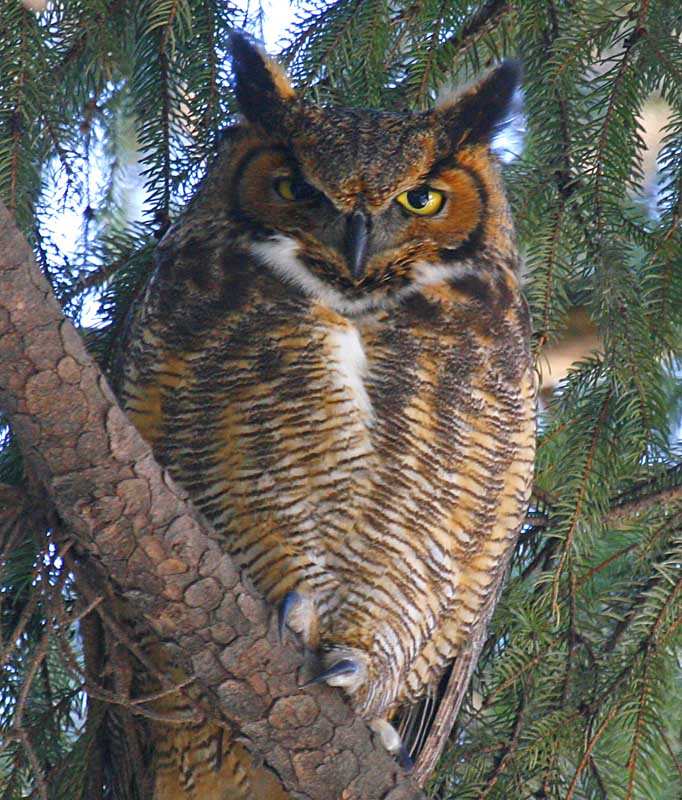The Great Horned Owl

Of all the birds that have been seen at Mount Auburn, the Great Horned Owl has by far attracted the most attention not only by the birding community – but by general visitors as well. The Great Horned Owl rests during the day in places such as the spruce trees in the Dell, and, if the owl is not bothered, it will slowly close its eyes and fall asleep.
The Great Horned Owl is the only large owl in our area with ear tufts, which, by the way, have nothing to do with hearing at all. The owl’s ears are located on the sides of the head, but are off-set, not like human ears which enables the owl to pinpoint the sound of it’s’ prey even in the dark. The owl’s eyes don’t move from side to side the way our eyes move, but to see something to the right or left the owl must turn its head. Contrary to popular belief, they cannot turn their heads completely around but they can rotate their heads 270 degrees with some extra vertebra in the neck.
Sometimes referred to as a “Tiger with wings,” the Great Horned Owl is a superb hunter and has taken prey from voles to animals as large as raccoons, and nothing is safe from the owl’s nighttime forays. The owl’s feathers are soft and flexible, helping it to fly silently and to approach its prey without warning. The undigested parts such as fur, feathers and bones are ‘upchucked’ in the form of a pellet. Great Horned Owls can live over 10 years in the wild and some in captivity have lived up to 30 years.
The Great Horned Owl is the earliest bird to set up a territory and begin nesting. Courting begins in earnest after Thanksgiving and intensifies right up into the New Year. The call is a series of hoots that can be heard even from a distance, both male and female owl’s duet to each other. The Great Horned Owl is not known to be a great nest builder; usually, they take up residence in an old hawk or crow nest.
Photo by John “Garp” Harrison.
One Comment
-
Pingback: BIRD’S THE WORD: OWL HAVE ANOTHER PLEASE | DigBoston
Leave a Reply